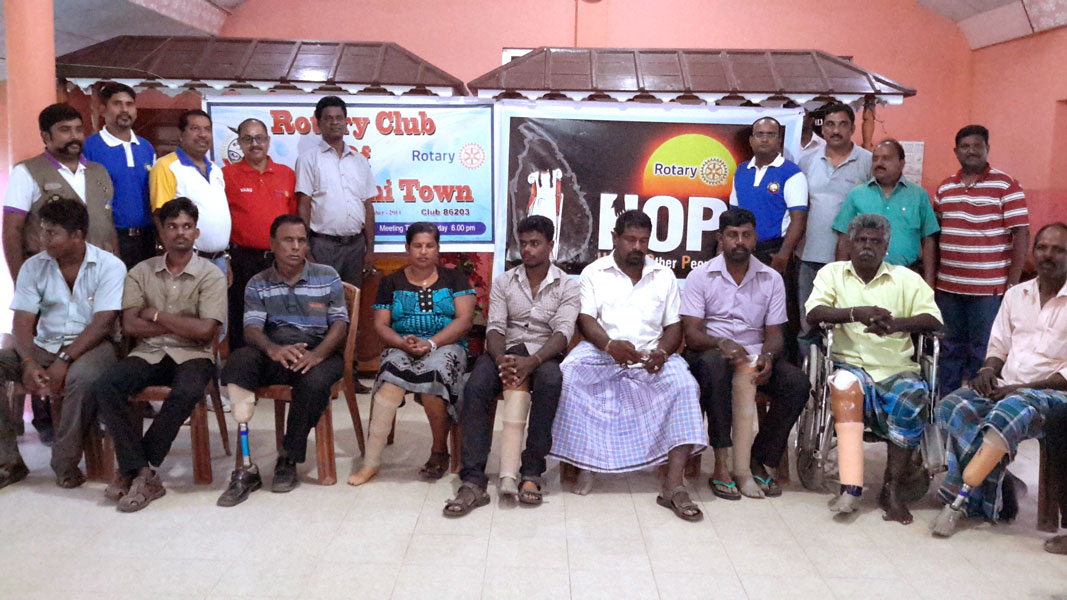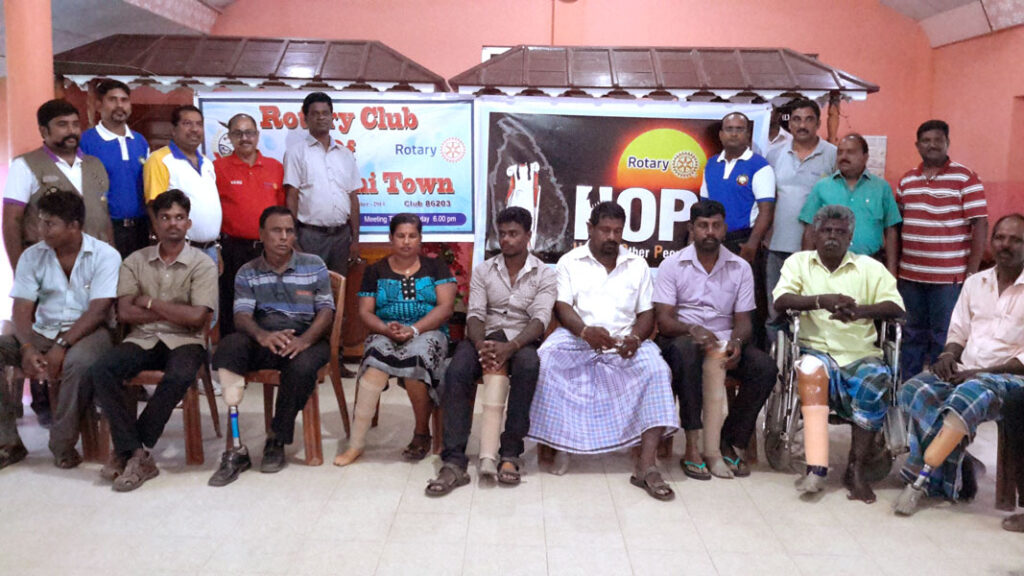Talking about a 14-year-old boy Kasun, who lost his leg in the Sri Lanka ethnic war, D 2982 (earlier part of D 2980) PDG R Vasu recalls how the boy patiently waited for a technician to fit the prosthetic limb to his hip. He rose up slowly and took a few steps forward and then ran back to hug Vasu.

“I have no words to describe how I felt,” he says, adding, “Rotary helped us change Kasun’s life and send him back to school thanks to Project HOPE (Helping Other People Evolve).” These Rotarians have been rebuilding the lives of people who lost their limbs in the war-torn island, especially children who stopped going to school because of their disability.
In early 2015, a 10-member District Committee toured Sri Lanka to gauge the impairment the war had caused. The findings left the committee “in tears”, and they made a firm resolve to help these children with artificial limbs. The first set of measurements were taken and a consignment of 64 limbs was shipped to Sri Lanka within two months.
After more surveys at Trincomalee, Batticaloa, Jaffna, Killinochi and Mullaitivu, the number swelled and raising money was the next challenge. But the 63 clubs of the District raised $110,000 in six months. “We owe it to the efforts of Rtn Sivakumar who visited all the clubs, shared stories, videos and pictures of the plight of the people of Sri Lanka and got them to donate the money,” says Vasu. For better coordination, the then DG of D 3220 (Sri Lanka), George Jesudasan and presidents of the Rotary Clubs of Jaffna, Mullaitivu, Killinochi, Batticaloa and Trincomalee were made part of the execution committee.
Last September, a team of doctors and technicians involved in the manufacture of limbs visited north and eastern Sri Lanka for first-hand information on what was required. While some people required only a part of the limb, others needed a full leg. Some had nothing beneath the hip. After spending 10 days of preliminary work, 1,800 people were short-listed and the requirement was finalised for 405 below-the-knee-to-toe, 150 from hip-to-toe and 10 pairs of limbs.
Manufacturers were contacted and “Rotary’s business network did the job for us,” he says. The lowest quote for the limbs was made by Rtn Srikanth, an artificial limb vendor and member of RC Pondicherry. The cost varied from Rs 9,000–40,000, and two maintenance centres were set up in Sri Lanka.
Unlike the traditional single piece prosthetic limb that weighs 4 kg and has to be fastened onto the body using a belt, the committee chose to use the dura aluminium rod technology limb with fibre reinforced plastic weighing just 1.4 kg, to create a three-piece replica of the real limb, so that the wear and tear of any portion of the limb could be rectified easily.
Vasu wants to do more, and says, “Those who received the limbs are the lucky ones; there are still many more survivors of the war, mostly children, who need our help.”







